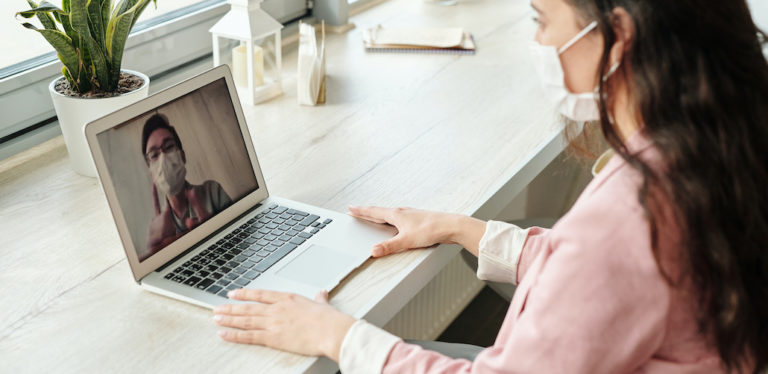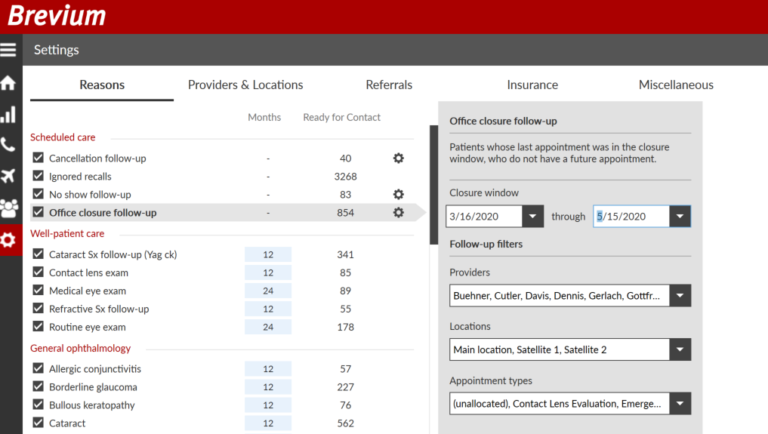The Brevium Blog

Answer Your Phones to Keep Patients Coming Back
Your phone is the lifeline between your patients and your practice. Despite the move to automated systems such as texting and email for scheduling appointments and sending reminders, the telephone is the tool of choice when a patient contacts your office for the first time, and it is the primary means of getting answers to insurance, billing and other inquiries, where the patient has a specific question and wants an immediate answer.
Answering the phone is also one of the most disruptive activities in the office. How you manage your phones is thus a two-edged sword. How successful your office etiquette is can make or break the efficiency and effectiveness of your office with patients. Use the tips below to build an optimal plan for handling your phones.
Test Your Current System
Start by evaluating your current phone system. Put yourself in your patients’ shoes and call your office as the patient might. Call before hours, call after hours, call at peak times, ask questions about treatments, ask to schedule an appointment for a specific condition. Monitor how well your phone system, your call center and your staff handle the calls. You can also ask your patients about their experience calling your office and how easily they were able to get to their desired result.
Track your phone calls. Enlist the receptionists to keep a record of each call, including when it came in, how long it lasted, whether they put the patient on hold and for how long. This will tell you the times of day when your call volumes are peaking and help you staff accordingly. You might find that many patients call in before hours or during lunch, because they don’t want their coworkers to hear about their medical issues. You might thus decide to have staff come in an hour early and increase backup during lunch to accommodate these patients.
Call your call center and your automated call service. Make sure they are professional and helpful. They should be better than voicemail. The automated call service should be clear and the options should be helpful and few in number. They should list the most common options first. For example, scheduling, changing or canceling an appointment should be option one; refilling a prescription might be option two; and so on.
Balance Staff Time with an Answering Service
Never let your calls go to voicemail. According to a Forbes study, 80 percent of people will never leave voicemail, because they don’t believe it will ever be heard. Another study showed that 95 percent of people would rather leave a text than a voicemail. [1] You have three options that do not include voicemail: Staff members answering phone calls live, automated call-back when a live person is available, and an answering service. Based on your call-tracking experience, you should staff your phones with receptionists or other staff members according to the call volumes you expect. If this is still insufficient, software services can offer a call-back service that lets the patient know how long the expected wait is and offer the option to wait or receive a call back when a live person is available. More than 60 percent of patients prefer a call-back to waiting. [2]
Call centers are available for after hours and when your staff is overwhelmed. You should select a call center that has access to schedule appointments and is available 24 hours a day, seven days a week, 365 days per year. You should ensure the call center is fully HIPAA compliant and that it can handle the languages your practice handles.
You can also provide different phone numbers for different situations, so you don’t incur the time and annoyance of bouncing callers around the office. For example, you can dedicate one number to billing questions and another to appointments. Be sure to list the appropriate number in communications to patients.
Make Patients Happy When You Answer the Phone
Follow phone etiquette and don’t let the phone ring more than three times. Patients will become irritated when the phone rings three or more times, and they will hang up after five rings. [3]
The person answering the phone should identify themselves and speak clearly. Too often, phone greetings have been delivered so many times that they are delivered too fast with little diction. Speak deliberately and clearly on every call.
Be friendly and professional. Follow a nice greeting with a question about the reason for the call. Be positive and helpful throughout the call. Be patient with any patients who are not happy. And never eat, drink or chew gum while talking on the phone.
Ask for the best time to return a call if one is necessary. Ask permission before putting the patient on hold, and suggest that you return the call if the hold wait time will be long. More than 60 percent of people will not wait more than two minutes. [4]
If any of your patients have fallen out of compliance because they were not able to communicate effectively with your office, or for any other reason — up to 2,000 patients per provider have become inactive — let Brevium help you bring them back.
Brevium’s software mines clients’ patient databases using customized algorithms to find lost patients. Brevium then uses communications strategies that are based on original research to help ensure that patients return for the care they need, and practices derive the greatest financial benefit from the patient appointment lifecycle™. Hundreds of practices have found Brevium to be a trusted partner, with personalized training and unlimited support.
I want to find out how Brevium can help me bring back lost patients.














